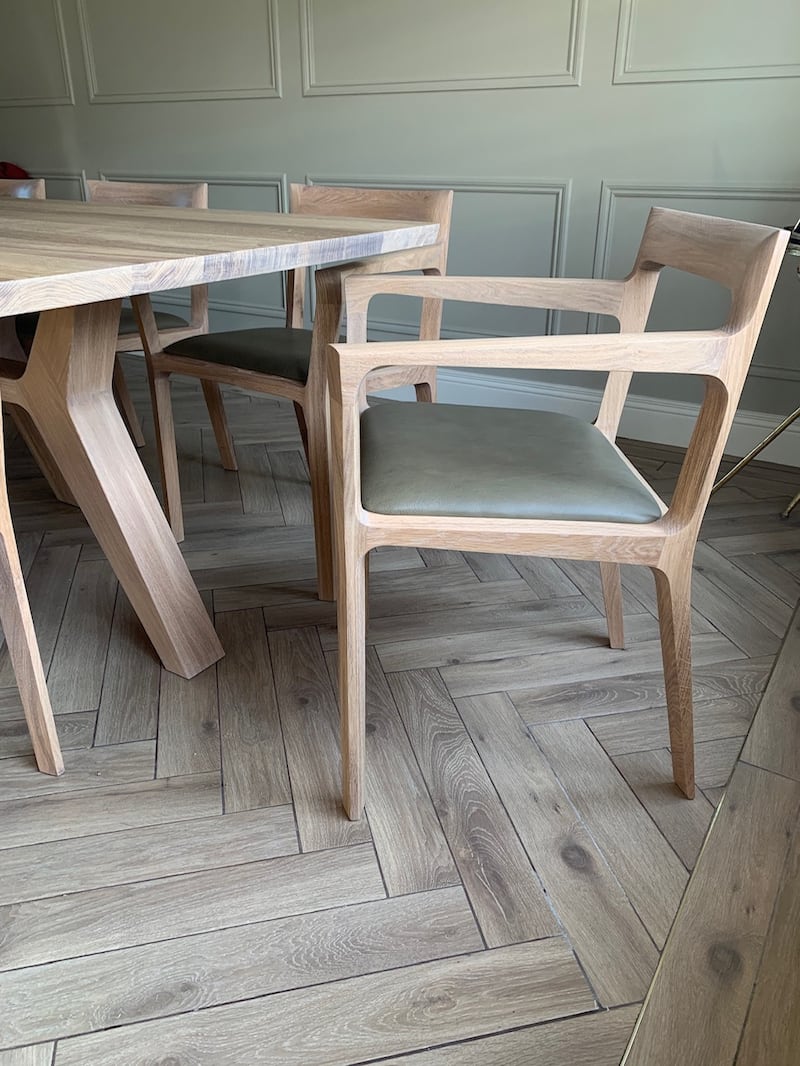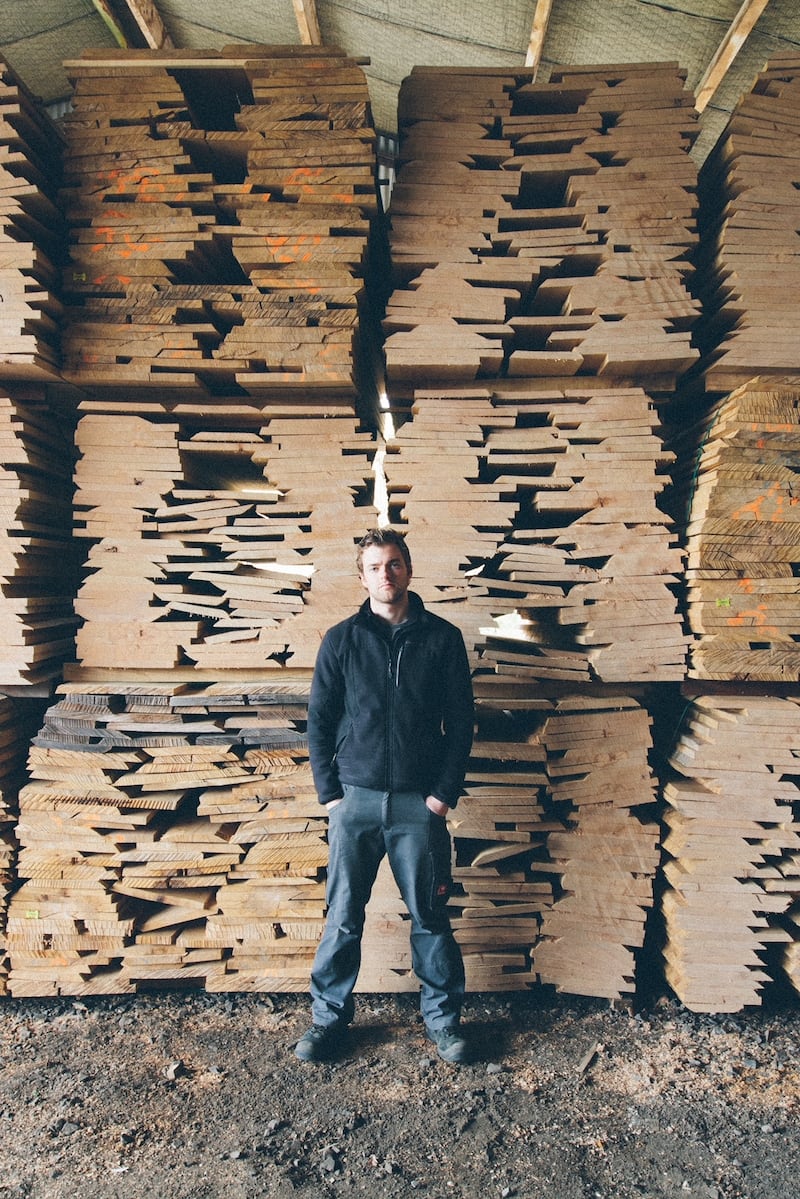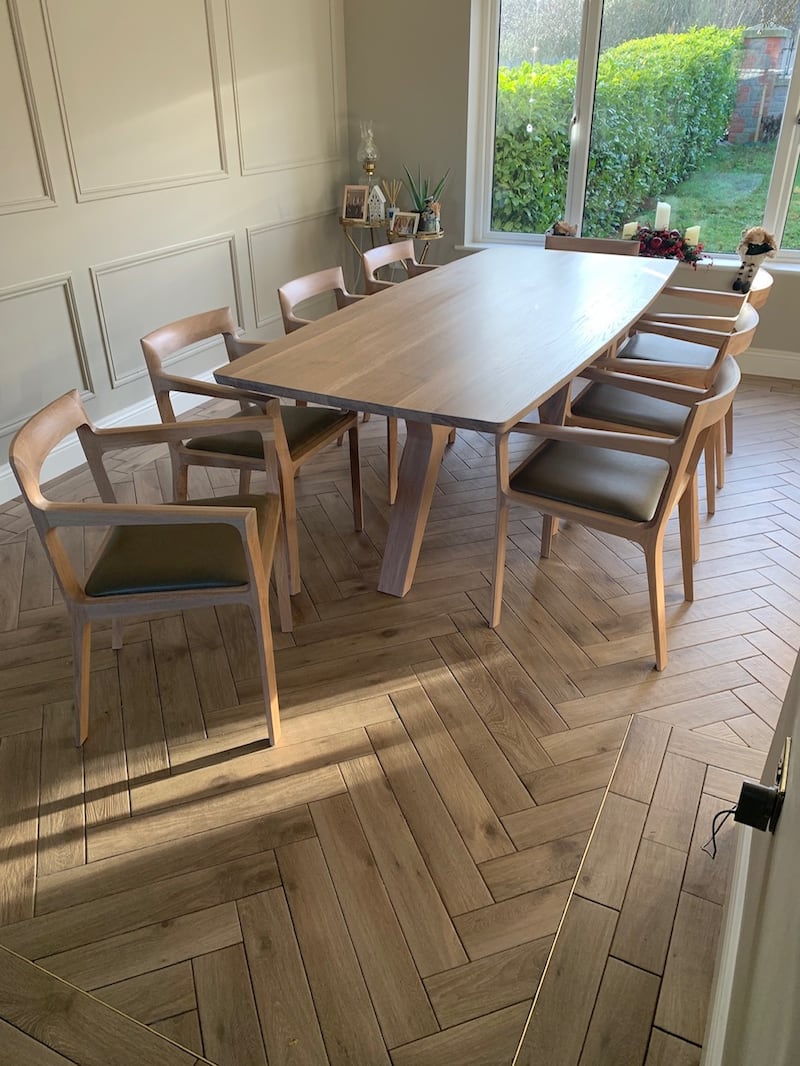Making fancy feasts is one thing, but imagine the bragging rights if you’d made the table and chairs, too. Ryan Connolly grew up in Monaghan, once the beating heart of furniture making in Ireland.
Isn’t there a terrible risk of wobbly legs?
That’s why you need to learn from the experts. Connolly was lucky enough to have the family business to play in during the summer holidays, but he followed up with a course at the renowned furniture course at Letterfrack, now part of the Atlantic Technological University (ATU).

I’m not quite sure I want to do the whole college thing right now
You don’t have to. Check out woodworking courses at adulteducationireland.ie, at institutes of further education around the country, or, if you fill the bill, see what your local Men’s Shed has to offer. After graduation, Connolly worked with Joseph Walsh (josephwalshstudio.com) in Co Cork, alongside an international team of talented makers, and then travelled to gain experience around the world. He now has his own Monaghan studio, Connolly and Company (connollyandcompany.com).
What about a website?
As with pretty much everything, the internet abounds with videos and wikis teaching woodworking, but you are dealing with sharp objects so it is better to start with some hands-on training.
A New Zealander in Dublin: ‘It feels like people work to live here as opposed to living to work’
Family fallouts: ‘I can’t describe the heartache of not having a relationship with my sister’
Zach Bryan in Dublin review: Gen Z’s Garth Brooks puts on a charming – and lengthy – show
How the death of an ‘old boy from Ireland’ in London-Irish suburb sparked a misguided viral appeal
Can anyone do it?
“Anyone can enjoy it,” says Connolly. But to excel, he says you need to be able to visualise what you want to make. Being able to draw also helps develop and produce your designs more efficiently. He also says it’s important to be tidy: “Clutter is often a recipe for disaster.”

I could learn to be tidy – maybe. But what else do I need to know?
Whatever course you take, you’ll learn about the properties of different woods and materials, how to use hand tools and how to look after them. You’ll also learn machine safety, and then pull it all together to realise a project.
Let’s get technical
Good point. Some of the making methods have been around for thousands of years, so getting into mortise and tenon joints, dovetails and so on makes you part of an incredible heritage. There are also cool things such as stack lamination, where you build in layers of wood, and bentwood, where soaking and steaming helps things get all curvy.

How about specialist tools?
Again, some of these won’t have changed much in centuries. Hand planes, chisels, squares and saws can be passed down through generations. Taking a course will give you access to tools, and crucially you’ll also gather the expertise to make the right choices if you do decide to invest in your own. Machines include panel saws, planers, bandsaws and spindle moulders, and prices range from hundreds to thousands, so make the most of your own local workshop before you splash out. Connolly is enchanted with his own collection of Japanese hand planes, which enable him to create his beautiful designs.
Why not just go to Ikea?
“Wood has endless potential to become anything,” says Connolly, who mainly works to commission and loves the moment when a client sees their new piece of furniture, an heirloom in the making. “There was a cultural change,” he says, as the idea of furniture being “disposable” became the norm. “This isn’t a sustainable practice,” he says. “We should consider the impact of ‘fast furniture’ and value quality over quantity once more.”
Ryan Connolly’s work is on show alongside other ATU graduates, students and staff at Trees to Treasures at Farmleigh Gallery until August 27th; admission is free. atu.ie, farmleigh.ie











